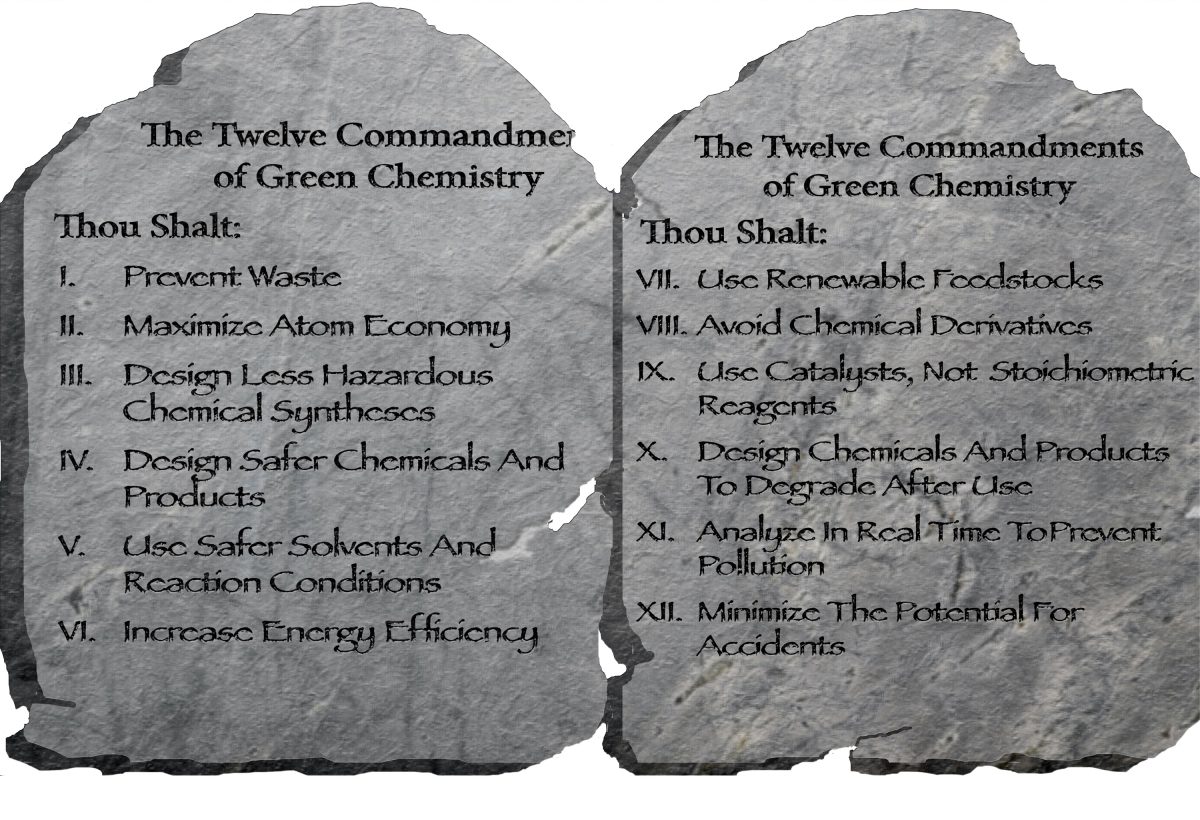Our latest blog series is designed to guide peptide chemists towards a greener, more sustainable laboratory. Each of our blog entries (or sermons, if you will) will delve into one principle. If you missed a previous one, they can be found here.
Third Commandment: Less Hazardous Chemical Syntheses
This principle states that “Wherever practicable, synthetic methods should be designed to use and generate substances that possess little or no toxicity to human health and the environment.”
As the contributor of this section on the ACS Green Chemistry website, David J. C. Constable, Ph.D., Director, ACS Green Chemistry Institute®, notes that this section is a two-part principle.1 The sentence’s first clause, “whenever possible,” allows for a lot of latitude and interpretation. This principle can be equated to the Hippocratic Oath, which states, “First, do no harm,” yet has no such optional clause. The harm, in this case, is performing more hazardous chemical syntheses than is practicable. Just as a doctor must complete the challenging and sometimes agonizing calculation of what harm is, so too should a chemist on a much more (seemingly) abstract, but possibly no less impactful level. Constable observes that “it’s not that adhering to this principle is particularly difficult to do; it’s more that chemists are disinterested in doing it.” He further clarifies that “for the synthetic organic chemist, effecting a successful chemical transformation in a new way or with a new molecule or in a new order is what matters.”1 As with the analogy with the Hippocratic Oath, the intent should be combined with the end result.
One pivotal way for the peptide chemist to adhere to this principle is to be conscious of their options.
The review article, “Sustainability Challenges in Peptide Synthesis and Purification: From R&D to Production,” presents some of these alternatives within a historical context.2 Still, as the authors note, there are two issues currently hindering the green chemistry in peptide synthesis. First, peptide complexity has increased significantly in the past decade, with many peptide products now containing >30 amino acids. Secondly, the green formation of amide bonds, especially for long peptides, is still challenging to achieve during peptide synthesis.2,3 More relevant to solid-phase peptide synthesis, which allows the synthesis of many more challenging peptides, solvents remain the most significant waste byproduct.2
Another influential article, “The Greening of Peptide Synthesis,” addressed these same issues as well.4
As a possible guide, a text published earlier this year titled “Evaluation of greener solvents for solid-phase peptide synthesis” states its intention as being “to find a greener solvent alternative that could replace DMF in SPPS manufacturing processes.” It points towards some achievable resolutions to the dilemma.5
As the authors state, “in peptide production, there’s no one-size-fits-all solution.” While acknowledging that truism, in the future, when the ability to create complex, high-purity peptides while avoiding copious amounts of toxic solvents is more widely addressed, adhering to the third commandment will be less onerous.
References
- https://www.acs.org/content/acs/en/greenchemistry/principles/12-principles-of-green-chemistry.html
- https://pubs.acs.org/doi/10.1021/acs.joc.8b03001
- https://www.proteogenix.science/scientific-corner/peptide-synthesis/challenges-in-chemical-and-recombinant-peptide-production-processes/
- https://pubs.rsc.org/en/content/articlelanding/2017/gc/c7gc00247e#!divCitation
- https://doi.org/10.1080/17518253.2021.1877363
Resources

